What is prāṇa or motility?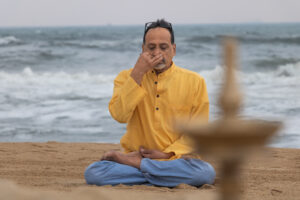
Prāṇa (motility) is a unit of motility. Also, it is known as life-force or chi/ qi in East Asia. In fact, prāṇa is a sentience which cannot be seen. However, it can be sensed and provides the existential drive to all creation.
This concept is very important, but also difficult to understand. Unlike medicine where the body is considered to be a biochemical process, in Yoga the body is considered to be driven by airstreams (vāyu), channels (nādi) and vortices (cakras), all of which are currents of motility (prāṇa). Since they are subtle, they cannot be measured and are experiential.
How does prāṇa move?
Prāṇa moves in a flow or vāyu. There are five such vāyu-s.
- Prāṇa-vāyu – All incoming motility flow, including breath, is called prāṇa-vāyu.
- Apāna-vāyu – the outward flow of prāṇa is called apāna-vāyu and manifests as all forms of excretion, including defecation, urination, menstruation etc.
- Vyāna-vāyu – is the aura of prāṇa that exudes from the body and allows us to project ourselves into the environment. It manifests as a warmth that emanates from the body as part of the vaiṣvāṇarvāgni (heat of the body).
- Udāna-vāyu – an upward flowing prāṇa from the chest which is driven by exhalation and covers speech as well as all forms of facial mannerisms is called udāna-vāyu. It is also the prāṇa that takes life away at death.
- Samāna-vāyu – lastly, samāna-vāyu is a circulatory force which is centered around the abdomen but covers both, circulation of food as well as blood. It is also part of the vaiṣvāṇarvāgni (heat of the body) and is driven by the heat of digestion, called jātarāgni.
How can one cognise prāṇa?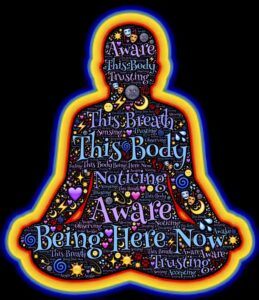
Cognition of prāṇa in the body (kṣetra) is prajñā (situational awareness). This awareness (prajñā) of the body is called awareness of the region (kṣetrajña). The body (kṣetra) is considered to be made up of five sheaths (kośa) these are;
- Annamayakośa – sheath made by food .
- Prāṇamayakośa – sheath of prāṇa .
- Manomayakośa – sheath of cognition
- Vijñānamayakośa – sheath of awareness of the system.
- Ānandamayakośa – sheath of bliss coming from merger.
We can also split awareness (prajñā) of a body (kshetragnya) into three levels.
-
Gross (sthūla) – This covers all aspects that can be cognized by the senses (indriya), cognitive apparatus (manas) and intellect (buddhi).
For example: the world and all material are considered to be made of five cardinal elements or panchabhūtas which are earth (prithvi), water (áp), fire (agni), air (vāyu) and space (ākāṣa).
All of these elements can be sensed by the sensory system and decoded into what they represent by the cognitive and logical apparatus. So, when we shop for vegetables, we look at the gross aspects of the vegetable – its colour, texture and feel to ascertain its health through our sensory apparatus and this is decoded by our cognitive and logical apparatus.
Within our bodies, this translates to the sheath made by food (annamayakośa) and sheath of prāṇa (prāṇamayakośa). This is called sthūla-śarīra or cognition of the gross body, which covers awareness of the material aspect of the human body driven by diet (annamayakośa) and motility (prāṇamayakośa).
-
Subtle (sūkṣma) – The awareness of gross elements is driven by an underlying principle, which is the consciousness (citta).
For example – The body is a complex mechanism and health is primarily determined by a condition known as homeostasis where you are considered healthy if your vitals are within a certain range, such as blood pressure, temperature, weight etc. But, how does the body maintain everything within homeostasis? That subtle element which controls physical manifestation of normalcy is the subtle body (sūkṣma-śarīra).
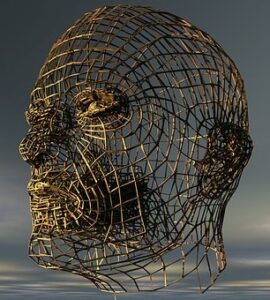
In the body, this is the awareness of the movement of consciousness within the body is called sheath of cognition (manomayakoṣa) and sheath of awareness of the system (vijñānamayakoṣa).
For instance, when you read this sentence, the primary information you see is derived through its physical attributes (sthūla-śarīra), of alphabets and words that are transmitted through a device. However, your experience of the underlying principles (sūkṣma-śarīra) comes from the quality of your awareness as you decipher the information (manomayakoṣa) relating to the subject (vijñānamayakoṣa).
-
Causal (kāraṇa) – this is the state from which all materiality (māyā) is caused, the reason materiality exists.
The source and sustaining aspect of existentiality is called Brahman. Also, it is the launch point of experience and when the yogi merges with it, the movement of consciousness stops (cittavṛtti-nirodhah), and there is an experience of infinite and changeless bliss. This is called the sheath of joy (ananda-maya-kosha).
For example – we know that Archimedes was bobbing physically (sthūla) in a bathtub in a state of null (Brahman) watching the waters sloshing over the tub and his body bobbing. Suddenly, an inspiration occurred (ānandamayakoṣa), and he cracked the problem of buoyancy (sūkṣma). The same can be applied to Newton sitting under a tree watching the apple fall down or August Kekule imagining the Benzene ring to be a snake chasing its own tail or Watson to discover the ATGC (adenine-thyamine-guanine-cystocine) model of DNA. This is the causal state (kāraṇa-śarīra).
Cakras – vortices of prāṇa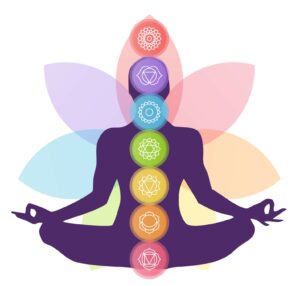
It is known in yoga and other forms of Oriental healing that rate of energy flow through these centres affects the behaviour of the person. As a matter of fact, ancient Oriental texts on this subject from India, China, Korea, and Japan speak of multiple energy vortices (cakra), but all agree that there are six major vortices in the human body which control all major organs.
-
Base cakra (mūl̄adhāra): (mūl̄= base + ādhar = foundation or source)
The first of the energy vortices aligns itself with the perineum, a flat region above the coccyx and between the anus and genitals. This centre affects the physiological aspects of the individual, that is, the overall energy levels, feeling of safety and health.
-
Self-evolution cakra (svādhiṣṭhāna): (sva = self + adhiṣṭhāna = evolved place)
This energy vortex corresponds to the sacral region around the genital area. It affects sexuality, social and communications skills of the individual. Control of this centre results in strong response control and emotional stability.
-
Stomach cakra (maṇipūra): (maṇipūra = navel)
This energy vortex is placed around the navel and corresponds to the lumbar area of the spine. This is a centre that controls situational and management skills.
-
Heart cakra (anāhata): (ana= not + āhata = touched)
Placed at the centre of the chest, this responds to the thoracic region on the spine. This is also the centre of emotional energy. So, a balanced centre is essential for emotional stability.
-
Throat cakra (viśuddhi): (viśuddhi = extraordinarily pure)
This energy vortex is placed around the Adam’s apple and corresponds to the cervical region in the spine. The thyroid, parathyroid and lymphatic systems, which control metabolic activity reside here. Since metabolism is the ability of the body to convert food into usable energy and rebuilding of tissue, seamless energy flow here is critical.
This is also the area which controls breathing and food intake, so any disruption in our stress levels will immediately impact the quality of our breathing and digestion.
-
Forehead cakra (ājña): (ājña = that which commands)
This energy vortex is placed between the eyebrows in the front of the cranium. It controls the functioning of the other energy vortices. It energizes the amygdala, pituitary and endocrine glands etc. and controls both, primary and secondary response. Consequently, this energy vortex is the primary input point for “fight or flight” stimulus.
One can see that the cakra system of Yoga is highly evolved and can be used in therapy. Another important aspect is that Yoga recognises that each of these vortices may be activated, depleted or congested to varying degrees and that this is an actively changing parameter. This makes the Yoga system subtle and sophisticated.
How can you sense prāṇa?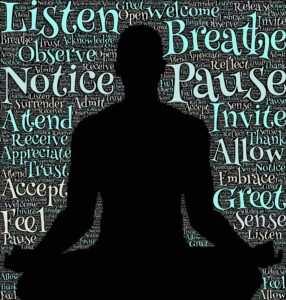
- Prāṇa can be sensed as mild pressures over the surface of the entity though they flow as vortices along various intersection points on all objects, known as vortices (cakras). In the human body, they exist at various points, but the main ones can be perceived along the spine through which channels of prāṇa (nādis).
- When āsanās are practiced, the prāṇa sheaths (kośas) and vortices (cakrās) begin to get streamlined. As a result, prāṇa flow is smooth and not depleted or congested. Consequently, there is rejuvenation of the organs and body. Finally, as a result of smooth prāṇa flow, stress levels drop, discrimination (vivekam) and dispassion (vairāgyam) are increased.
Points to ponder.
Internal Links: Dharma (conditioning), Stress and Situational Awareness. Karma,
External Links: Chakra, Pancha Tattva, Pancha Prana, Pancha Kosha, Nadi.
- Have you experienced changes to your energy levels in times of stress?
- When you are driving any vehicle and wish to cut across traffic, where is the stress felt most on your body? (It should be along the lower back). Consequently, do you become aware of the energy flow and points of congestion or depletion?
- How is the energy level and flow affected when one has a cold?
